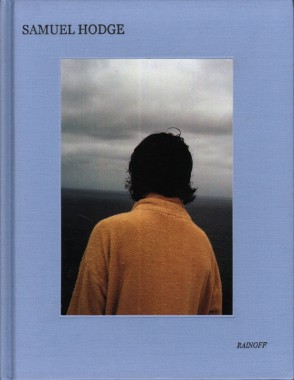
Samuel Hodge, Pretty Telling I Suppose
Hardcover, 72 pp., offset 4/4, 203 x 266 mm
Edition of 500
ISBN 978-0-9806516-0-7
Published by Rainoff Books
$45.00 ·
Foreword by Gert Jonkers.
Art, Culture, Distribution, Gert Jonkers, Photography, Rainoff Books, Samuel Hodge
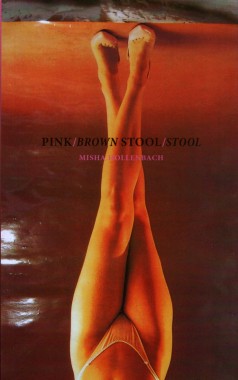
Misha Hollenbach, Pink/Brown Stool/Stool
Softcover, 64 pp., offset 4/4, 4.5 x 7 inches
Edition of 250
ISBN 978-0-9825936-3-9
Published by Seems
out of print
Born last century. Based in Melbourne, Australia. Misha Hollenbach lives and works in many languages, times and places. Hollenbach is one half of the brand Perks and Mini (P.A.M.) a multi media excursion encompassing art, design, fashion, and publishing. He is also part of The Changes, music and art collective.
Hollenbach is influenced by energy, as his work moves through various mediums including sculpture and painting, printed media and collage. Rather than shy away from objects deemed useless, or unwanted, he embraces their meaningless meanings to create an unfamiliar language containing familiar objects. By employing found objects and pairing them with wit and humor, he continues the narrative of the Dada and Pop artists.
In a lineage that extends through Jim Shaw, Andy Warhol and Marcel Duchamp, the rallying around the already readymade repositions things for freer symbolic enterprises. In the re-presentation of shit, Misha touches upon the etymological origins of faeces, which derives from faex, the Latin for dregs. He is using the dregs, things humans have casted away; shit becomes a metaphor for the unwanted.
By putting these outcasts back together with ready mix, the images of the objects do not return to us as they normally should; they lose their original function. With this method, he is breaking our own need to put the image back together in a fixed or familiar way. He strips back the structure of meaning — and this brings about a danger: the readymades return as phantasms and representations of abstract ideas. A Hush Puppy becomes a Push Poopy. Doodoo becomes Dada.
—Timothy Moore
Andy Warhol, Art, Culture, Distribution, Jim Shaw, Marcel Duchamp, Misha Hollenbach, Seems, Timothy Moore
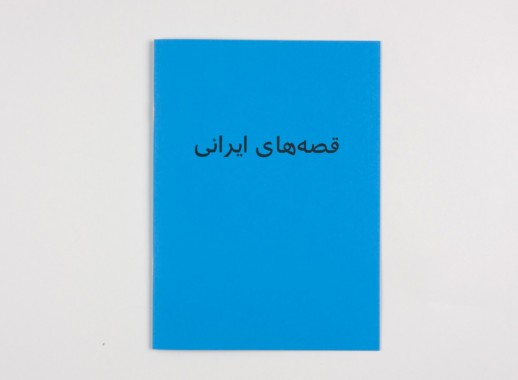
Olaf Knarvik, Iranian Tales
Softcover, 16 pp., offset 4/1, 150 x 210 mm
Edition of 500
Published by Aki Books
$9.00 ·
Aki Book No. 3
Aki Books, Culture, Distribution, Olaf Knarvik, Photography
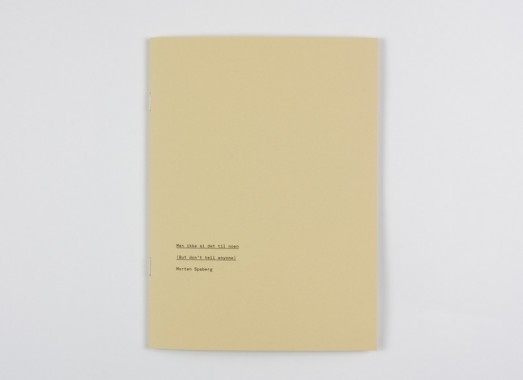
Morten Spaberg, Men ikke si det til noen (But don’t tell anyone)
Softcover, 20 pp., offset 1/1, 150 x 210 mm
Edition of 500
Published by Aki Books
$9.00 ·
Aki Book No. 2
Aki Books, Distribution, Morten Spaberg, Photography
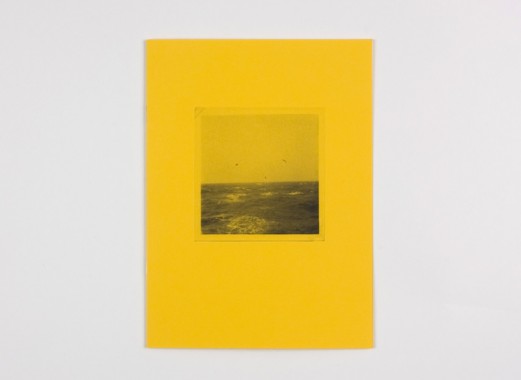
Aslak Gurholt Rønsen, Summer of 66
Softcover, 12 pp., offset 1/1, 150 x 210 mm
Edition of 500
Published by Aki Books
$9.00 ·
Aki Book No. 1
Aki Books, Art, Aslak Gurholt Rønsen, Distribution, Photography
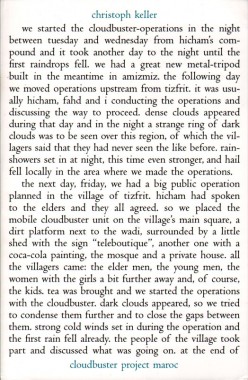
Christoph Keller, Cloudbuster Project Maroc
Softcover, 192 pp., offset 2/4, 110 x 170 mm
French, English, German, Arabic
Edition of 250 for each language
Published by Christoph Keller
$15.00 ·
In 2008, German artist Christoph Keller traveled through Morocco with his own version of Wilhelm Reich’s cloudbuster machine to engage local people in the age-old process of conjuring rainstorms. This artists book, which combines cinematic flip-book elements with more straightforward photo documentation, is a record of Keller’s project. Small color photographs depict the cloudbuster machine being built and used to make rain in four different locations. The only explanatory text appears on the book’s cover, which in this case is printed in English.
Africa, Art, Christoph Keller, Cloudbuster, Culture, Distribution, Manuel Raeder, Morocco, Wilhelm Reich
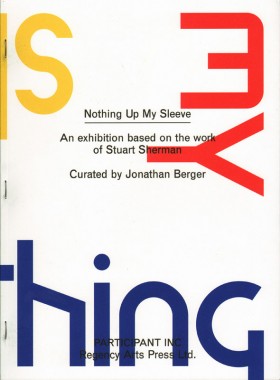
Jonathan Berger, Nothing Up My Sleeve
Softcover, 160 pp., offset 4/1, 8.5 x 11.5 inches
Edition of 1000
ISBN 978-098023-241-7
Published by Regency Arts Press, Participant Inc.
$20.00 ·
Nothing Up My Sleeve: An Exhibition Based on the Work of Stuart Sherman, is a curator’s book co-published with the New York not-for-profit space, Participant Inc. The exhibition, curated by Jonathan Berger, took place at Participant Inc. in the winter of 2010.
Berger paired the work of Stuart Sherman, a brilliant performance artist who died in 2001, with other performers and artists whose work, while not directly affected by Sherman, shares a similar spirit and exploration of authenticity. The book is an extension of the exhibition, composed of entries from each performer/artist included in the show: Matthew Brannon, Carol Bove, James Lee Byars, Vaginal Davis, Harry Houdini, Andy Kaufman, and several others. Reprinted in the book, with new commentary, are two early critical texts about Stuart Sherman’s spectacle works, by John Matturri (written in 1978), and Berenice Reynaud (published in issue eight of October art journal, 1979). There are also texts by Lia Gangitano, Jonathan Berger, Molly McGarry, and Mark Bradford.
Andy Kaufman, Art, Berenice Reynaud, Carol Bove, Distribution, Harry Houdini, James Lee Byars, John Matturri, Jonathan Berger, Lia Gangitano, Mark Bradford, Matthew Brannon, Molly McGarry, Participant Inc, Performance, Regency Arts Press, Stuart Sherman, Vaginal Davis
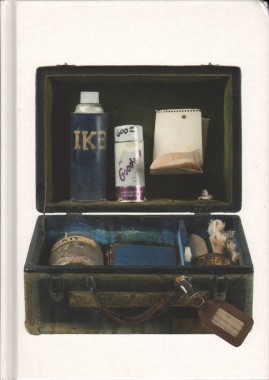
Robert Pincus-Witten and Rotraut Klein-Moquay, Yves Klein: USA
Hardcover, 204 pp., offset 4/1, 176 x 242 mm
Edition of 2000
ISBN 978-291627-564-2
Published by Editions Dilecta
$32.00 · out of stock
This book, produced in collaboration with the Yves Klein Archives, recounts the relationship between Yves Klein, one of the major artists of the postwar period, and the United States — a relationship of mutual fascination and reciprocal influence. Numerous documents, many of them previously unpublished, bear witness to the close ties that Klein forged with the U.S. The rising stars of the early 1960s American art scene (Robert Rauschenberg, Jasper Johns and Frank Stella, plus Marcel Duchamp) all make an appearance here, as does President Eisenhower! The book includes an interview with Rotraut Klein-Moquay, who talks about her trip to the United States with Yves Klein in 1961, as well as the artist’s comments on his own work. It also includes a hitherto unpublished essay by the American critic Robert Pincus-Witten, who met the protagonists of this story when he worked for dealer Leo Castelli.
In the spring of 1961, Yves Klein and his fiancee Rotraut Uecker, a distinguished artist herself, were en route to New York City. Leo Castelli, a leading American art dealer, had scheduled an exhibition of the work of “Yves le Monochrome” (as the painter had styled himself), to begin on April 11th. The exhibition marked Klein’s first solo show in the United States and its closing, set for the 29th of that month, virtually coincided with the artist’s thirty-third birthday, celebrated just the day before.
At the time, apart from the focus of a circle of fellow artists, noted critics and European dealers, a few alert collectors and many incensed detractors, Klein was still far from being recognized as the most influential artist to have emerged in postwar France — as he is regarded today; nor would one even dream that in scarcely more than a year he would be dead.
Art, DAP, Frank Stella, Jasper Johns, Leo Castelli, Marcel Duchamp, Robert Pincus-Witten, Robert Rauschenberg, Rotraut Klein-Moquay, Rotraut Uecker, Yves Klein
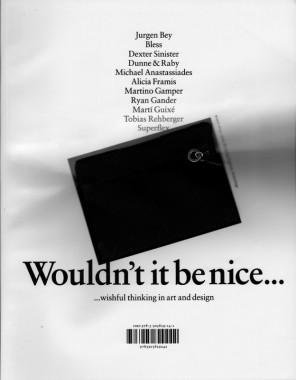
Katya Garcia-Anton and Emily King, Wouldn’t it be nice
Softcover, 300 pp., offset 4/1, 232 x 297 mm
Edition of 2000
ISBN 978-3-905829-24-2
Published by JRP|Ringier
$42.00 ·
Contemporary culture is witnessing one of the most significant shifts of recent times. The old dividing lines between artists and designers appear to be dissolving into one another. Indeed the breadth and range of investigation and inspiration they share is possibly the widest to date. This publication
Wouldn’t it be nice hopes to present a series of projects emerging from these lines of dissolution, which reflect the current spirit of cultural production internationally.
The publication includes interviews with Jurgen Bey, Bless, Dexter Sinister, Dunne & Raby and Michael Anastassiades, Alicia Framis, Martino Gamper, Ryan Gander, Martí Guixé, Tobias Rehberger, and Superflex. Fully illustrated, the book presents a number of projects that have been specially commissioned for the exhibition. Quoting the aesthetic of the glossy magazine, the publication is designed by London-based group Graphic Thought Facility, and has attached to each cover a Bless N°14–2000, Shopping Supports Stickerbags self-adhesive purse/multiple.
Alicia Framis, Art, Bless, Christian Brändle, Criticism, DAP, Dexter Sinister, Emily King, Fashion, Jean-Pierre Greff, JRP|Ringier, Jurgen Bey, Katya Garcia-Anton, Martí Guixé, Martino Gamper, Ryan Gander, Theory, Tobias Rehberger
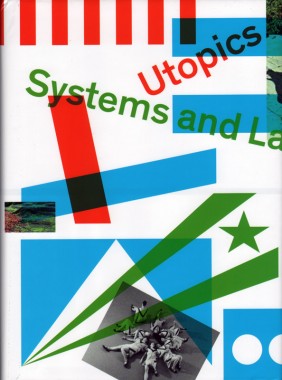
Simon Lamunière, Utopics: Systems and Landmarks
Hardcover, 160 pp., offset 4/4, 160 x 220 mm
Edition of 2000
ISBN 978-3-03764-056-2
Published by JRP|Ringier
$45.00 ·
This publication examines the spaces, nations, and communities created by artists or indivuals to develop alternative modes of living. Throughout history individuals have continuously developed systems based on a mix of reality, fiction, and mediatization, create micro-nations, or fight for their existence. All these proposals are simultaneously real and utopic. By inventing identity signs (IDs, flags, constitutions, currencies, etc.), by practicing their beliefs (be it through dance, naturism, terrorism, or collectivism), and by working on the boundaries of reality (parallel worlds, isolationism, new territories, etc.), these proposals are challenging our definitions of normalcy and territoriality. The title
Utopics is itself the free contraction of utopias, you, topic, topos, and pics.
Conceived as a glossary, the book includes artists such as Le Bélier, Carsten Höller, Clemens von Wedemeyer, Fabrice Gygi, General Idea, Lang/Baumann, Matt Mullican, Mai-Thu Perret, NSK (Irwin), Peter Coffin, Steiner & Lenzlinger, Superflex, as well as intitiatives such as La République Géniale (Robert Filliou), State of Sabotage (Robert Jelinek), micro-nations, L’Ecole de Stéphanie, etc.
Andrea Zittel, Anthroposophy, Architecture, Art, Betty Stocker, Buckminster Fuller, Carsten Höller, Clemens von Wedemeyer, Criticism, DAP, Fabienne Bideau, Fabrice Gygi, General Idea, Ildiko Dao, James Turrell, JRP|Ringier, Landmarks, Lang/Baumann, Le Bélier, Liam Gillick, Mai-Thu Perret, Matt Mullican, Nicolas Bourriaud, NSK (Irwin), Peter Coffin, Philippe Parreno, Photography, Pics, Pictures, Rirkrit Tiravanija, Rudoph Steiner, Simon Lamunière, Steiner & Lenzlinger, Superflex, Systems, Theory, Topic, Topos, Utopias, Waldorf
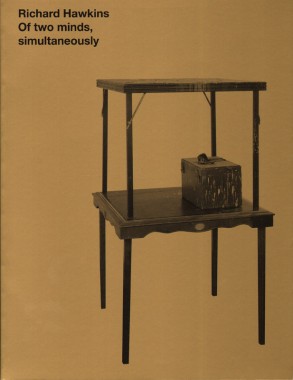
Richard Hawkins, Of two minds, simultaneously
Softcover, 164 pp., offset 4/1, 215 x 280 mm
Edition of 2000
ISBN 978-3-86560-425-5
Published by Walther König
$59.00 ·
This monograph on Richard Hawkins is published on the occasion of his first institutional overview exhibition with works from 1993 to now: starting with his collages from the 1990s — intriguing because they show how a powerful artwork can originate from very few visual means – right up to his recent dolls houses transformed into brothels that herald another completely new direction in Hawkins heterogeneous oeuvre. In his work Hawkins looks both critically and appreciatively at social, cultural and historical phenomena, mixing these with autobiographical motives to create a multiform body of work linked by countless internal references in ideas, material and style. These formal and internal links resonate throughout the whole book as components of themes that range from male desire, gender issues and pop star idolization to the struggle of mixedrace Native Americans or the function of hermaphrodite statuary in the Roman era.
Art, Bruce Hainley, Christopher Müller, DAP, Edna Van Duyn, Richard Hawkins, Walther König
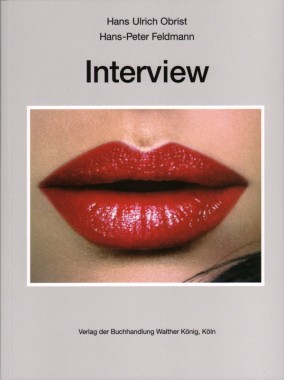
Hans Ulrich Obrist and Hans-Peter Feldmann, Interview
Softcover, 130 pp., offset 4/1, 165 x 220 mm
English and German
Edition of 2000
ISBN 978-3-86560-660-0
Published by Walther König
$49.00 ·
Hans Ulrich Obrist and Hans-Peter Feldmann, who have known each other for around 20 years, talked about the possibility of an interview for quite some time. They finally decided that Obrist pose the questions in writing, and Feldmann answer each of them with a picture.
Art, DAP, Hans Ulrich Obrist, Hans-Peter Feldmann, Interview, Photography, Pictures, Walther König
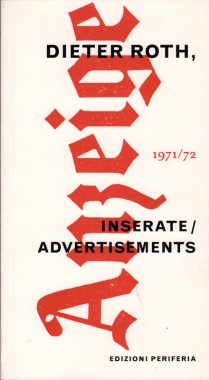
Dieter Roth, Inserate/Advertisements 1971/1972
Softcover, 156 pp., offset 2/1, 110 x 205 mm
English and German
Edition of 2000
ISBN 978-3-907474-77-8
Published by Edizioni Periferia
$19.00 · out of stock
Actionist, maker of objects, writer and graphic artist Dieter Roth created an exceptionally diverse and convoluted oeuvre. In Lucerne he published a series of small ads twice weekly in the newspaper Anzeiger Stadt Luzern und Umgebung, consisting of an aphorism and signed by his initials. Embedded in advertisements from real life, these ads conjured the surreal, subversive side of existence as in statements like “A good beginning is an evil end”, “A tear is as evil as a good word” and “Two tears are better than five stones”. The paper’s bourgeois readers raised such a protest over the disturbance of their peace by such enigmatic profundity that the paper felt compelled to terminate publication after 248 ads. From 1973 to 1979, Roth published his statements in artist’s books, titled The Sea of Tears (with the original pages of the newspaper) and Sea of Tears 1–5. This is the first complete, chronological publication of the ads, along with an English translation.
Art, Barbara Wien, Criticism, DAP, Dieter Roth, Edizioni Periferia, Stephan Fiedler












